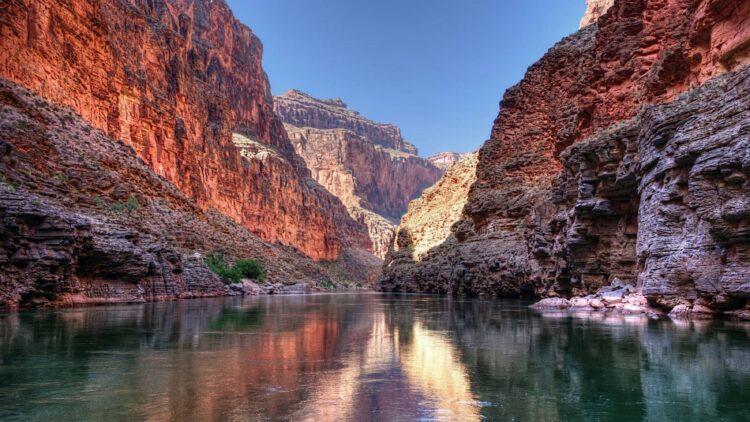The Grand Canyon of Colorado state is famous for its natural and historical beauty worldwide. Nevertheless, what is hidden behind this beautiful view is the continued mining of uranium that negatively impacts the environment, animals, and people in the area.
As these activities increase, the risks associated with radioactive contamination and ecological danger become dangerous to this much-valued area.
Mining activities spark renewed fears for Grand Canyon’s future
Even the recent restart of uranium mines in and near the Grand Canyon area has again sparked such issues. Among these is the Pinyon Plain Mine, operating in a legal gray area that circumvents the protective status of the Baaj Nwaavjo I’tah Kukveni – Ancestral Footprints Monument.
However, today, this mine underwent intense activities, including uranium extraction, at the expense of other systems. The radiation threat also threatens water sources since waste from extractive operations may percolate into water sources or the Colorado River.
Currently, this water source supplies more than 40 million people. Thus, water pollution poses a catastrophic consequence. Further, wastewater storage, based on the process of evaporation ponds, exposes wildlife to contaminated water, increasing the damage.
Equally disturbing is the historical and cultural value of this land. In the Havasupai Tribe’s tradition, they believe that mining halts their ability to practice and hinders the supply of resources essential for their existence. These intersecting dangers have lately prompted environmental and tribal groups to oppose other explorations for mining activities.
The environmental toll of uranium mining is unavoidable
The effects of uranium mining encompass far more than the mineral extraction process. Radioactive dust is another dangerous effect that can be dangerous to human life. Mining activities emit fine particles into the air, and these particles, by the force of the wind, travel for many kilometers, affecting the nearby forests, wildlife, and people with radiation.
For the Grand Canyon, contamination could go as far as the bottom of the canyon and its sensitive biosphere. Wildlife is further threatened by evaporation ponds, which contain millions of gallons of water that have been contaminated.
Birds, mammals, and insects also mistake these ponds for natural water sources and get poisoned through radiation. A portion of this water is even released into the surrounding soil since some containment techniques are inefficient.
In addition, use of water sprayers that enhance evaporation also enhances contamination. Materials containing radioactive particles can be washed out by rain on plants, damaging food chains, animals, and people depending on the plants and animal populations.
These environmental concerns prove that the expansion of mining in areas of ecological value, such as the Grand Canyon, is unsustainable.
Cultural and legal battles erupt over uranium mining rights
Coverage and resistance against uranium mining are not rare, but recent occurrences add fuel to the fire. The indigenous people, conservationists, and local authorities claim that the historic mining laws, including the Mining Act of 1872, discriminate in favor of industry at the expense of public safety and the environment’s welfare.
This act enables old mines such as Pinyon Plain to continue functioning due to modern policies on new claims on protected land. The Havasupai Tribe has been leading the fight, arguing that nothing is more valuable than cultural resources in the Grand Canyon.
The mining not only continues to endanger the indigenous people’s sacred sites but also may pollute other minable resources essential to their pre-modern existence. Such losses are inconceivable, and mining continues to have long-term effects on affected communities.
Legal issues such as water pollution add to the problem. Some regulators have argued that mining is not very risky compared to what some more credible analytical research has shown. This lack of consensus breeds distrust and demonstrates why more must be done for environmental conservation.
These conflicts raise the more significant conflict between preserving natural resources and the industrial need for uranium. The reopening of uranium mining around the Grand Canyon is a shocking testimony of the right balance between the power generation of uranium and a sustainable environment.
As much as we fight for clean energy, we must not gamble with one of the most beautiful landscapes in the world. Preservation of the Grand Canyon calls for the most urgent action to preserve the natural and historical values of the country.

